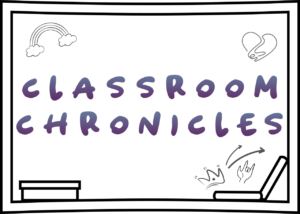In today’s rapidly evolving world, education is undergoing a profound transformation, thanks to the power of technology. Educational technology, or edtech, has emerged as a catalyst for change, revolutionizing traditional teaching methods and unlocking new opportunities for students and educators alike. This blog post explores the immense potential of educational technology in empowering education, fostering collaboration, and enhancing learning experiences.
The Role of Educational Technology in Modern Education
Educational technology encompasses a wide range of tools and platforms designed to enhance the learning process. From interactive whiteboards and online learning platforms to virtual reality simulations and artificial intelligence, these technological advancements have revolutionized education. Traditional teaching methods are no longer confined to textbooks and lectures; they are now complemented by dynamic and engaging digital resources that cater to diverse learning styles.
One of the significant advantages of educational technology is its ability to promote student engagement and active learning. With interactive learning platforms and gamified experiences, students can immerse themselves in educational content and actively participate in their own learning journey. This hands-on approach cultivates critical thinking, problem-solving skills, and a deeper understanding of complex concepts.
Furthermore, educational technology facilitates personalized learning experiences. Each student has unique strengths, weaknesses, and learning preferences. Edtech provides adaptive learning programs that can tailor educational content and pace to individual students, ensuring optimal comprehension and progress. This personalized approach empowers students to take control of their education and reach their full potential.
Access to Quality Education Through Educational Technology
While education is widely acknowledged as a fundamental right, millions of individuals around the world still face barriers to accessing quality education. Educational technology has the potential to bridge this gap and ensure equal opportunities for all learners, regardless of their geographical location or socioeconomic background.
Online learning platforms and distance education have emerged as powerful tools in expanding access to quality education. Through web-based platforms, students can access educational resources and engage in remote learning experiences, eliminating the constraints of physical location. This is particularly beneficial for students in remote areas, where access to quality education is limited. Educational technology enables them to connect with expert educators, access a wealth of educational content, and interact with peers from around the world.
Numerous successful initiatives have demonstrated the transformative power of educational technology in underserved communities. For example, the Khan Academy provides free, high-quality educational videos and exercises, empowering learners globally. Similarly, initiatives like the One Laptop per Child program have provided technology and digital resources to children in disadvantaged areas, enabling them to access educational content and acquire crucial digital literacy skills.
Enhancing Teaching and Learning Experiences
Educational technology not only benefits students but also empowers educators to enhance their teaching methods and create innovative learning experiences. By integrating technology into their teaching practices, educators can cultivate student-centered learning environments that foster curiosity, collaboration, and critical thinking.
Interactive tools, simulations, and virtual reality are revolutionizing how educators deliver lessons and engage students. Instead of relying solely on traditional lectures, educators can utilize interactive whiteboards and multimedia resources to create dynamic presentations that capture students’ attention. Virtual reality simulations offer immersive experiences that transport students to historical events, scientific phenomena, or distant locations, allowing for a deeper understanding of the subject matter.
Moreover, educational technology provides a wealth of resources and digital libraries that educators can tap into, expanding their repertoire of teaching materials. These resources offer up-to-date information, multimedia content, and interactive exercises that enhance the learning experience and cater to diverse learning styles.
Fostering Collaboration and Communication in Education
Collaboration and communication skills are essential for success in the modern world. Educational technology facilitates collaborative learning environments that prepare students for the demands of the future workforce. Online collaboration tools and platforms enable students to work together on projects, share ideas, and engage in meaningful discussions, irrespective of their physical location.
Digital platforms also foster communication between educators, students, and parents, promoting a seamless flow of information. Learning management systems and communication apps enable real-time feedback, progress tracking, and parent-teacher communication, ensuring that all stakeholders are actively involved in the education process.
Successful collaborative projects facilitated by educational technology have demonstrated the power of teamwork and collective problem-solving. Students from different parts of the world can collaborate on assignments, leveraging their diverse perspectives and experiences. These collaborative experiences not only enhance learning outcomes but also nurture skills such as communication, empathy, and cultural awareness.
Challenges and Considerations in Implementing Educational Technology
While the potential of educational technology is immense, its successful implementation requires careful consideration of various challenges and concerns. One such challenge is the digital divide, which refers to the unequal access to technology and internet connectivity. To bridge this gap, policymakers and educational institutions must work together to ensure equitable access to educational technology resources and infrastructure.
Privacy and data security are also critical concerns when integrating technology into education. Educational institutions must prioritize data protection and implement robust security measures to safeguard sensitive student information. Clear guidelines and policies should be established to govern the collection, storage, and use of data in educational technology platforms.
Furthermore, digital literacy and training for educators and students are crucial to maximize the benefits of educational technology. Educators need professional development opportunities to develop the skills necessary to effectively integrate technology into their teaching practices. Students, on the other hand, need guidance and support to navigate the digital landscape responsibly and develop digital literacy skills.
Takeaway
Educational technology has the power to transform education, empower learners, and foster collaboration in ways previously unimaginable. By harnessing the potential of educational technology, we can create inclusive and personalized learning environments that prepare students for the challenges of the future. Educators, policymakers, and stakeholders must embrace this technological revolution and work collaboratively to overcome challenges, ensuring that every student has access to quality education. Let us harness the power of educational technology to empower the next generation and shape a brighter future for education.

